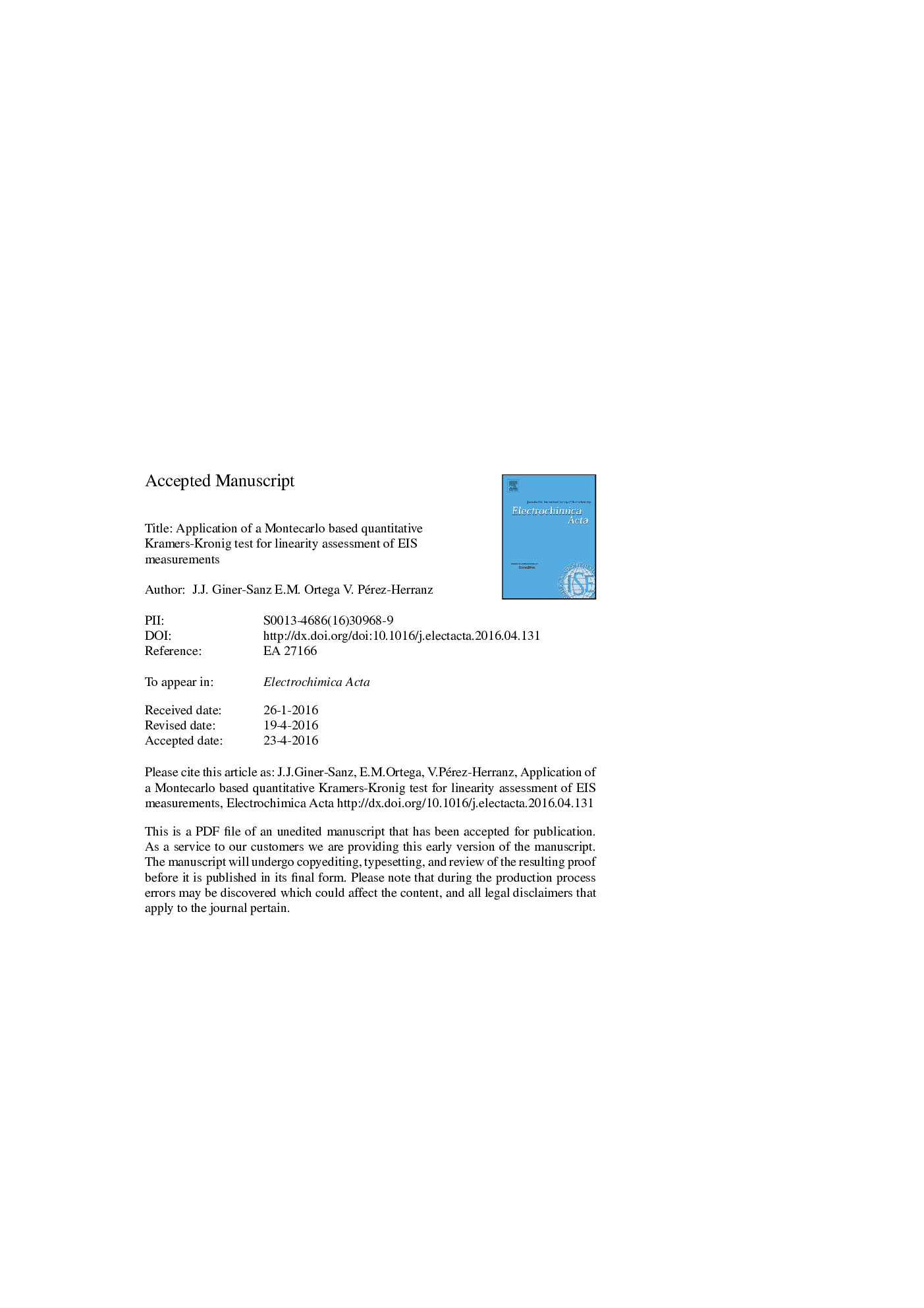| Article ID | Journal | Published Year | Pages | File Type |
|---|---|---|---|---|
| 6606812 | Electrochimica Acta | 2016 | 42 Pages |
Abstract
Electrochemical Impedance Spectroscopy (EIS) is a very powerful tool to study the behaviour of electrochemical systems. Three conditions must be fulfilled during EIS measurements: causality, linearity, and stability. If any of these conditions is not achieved, then the conclusions obtained from the analysis of the measured spectra may be biased, or even misguided. For this reason, the verification of the compliance of these conditions is critical before accepting any analysis performed on an experimental spectrum. In a previous work, an experimental spectrum quantitative validation technique based on Kramers-Kronig relations was presented. The validation method consists in a Kramers-Kronig (KK) validation test, by equivalent electrical circuit fitting, coupled with a Montecarlo error propagation method. The validation technique builds a consistency region for a given confidence level that allows to discriminate between the individual points of the EIS spectrum that are consistent with the four fundamental hypotheses, and the inconsistent ones. The aim of this work is to validate experimentally if the quantitative validation technique is able to detect nonlinearities. In order to achieve this goal, the EIS spectrum of a markedly nonlinear system was measured experimentally using different perturbation amplitudes. The validation technique was applied to each one of the measured spectra. The method successfully managed to identify large nonlinearities; but did not detect slight ones.
Related Topics
Physical Sciences and Engineering
Chemical Engineering
Chemical Engineering (General)
Authors
J.J. Giner-Sanz, E.M. Ortega, V. Pérez-Herranz,
